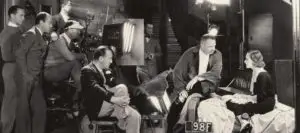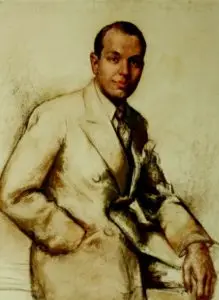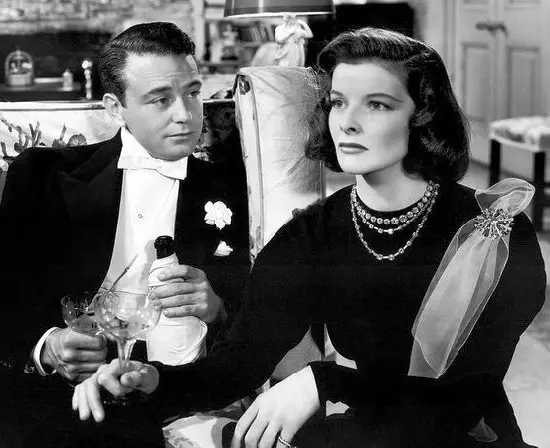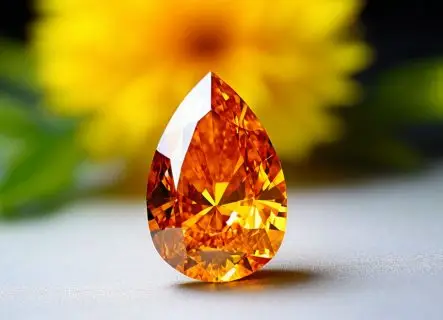
Paul Flato – a jeweler to the stars – lived a life so similar to the jewelry he created. His unique, bold, extravagant, controversial and vivid fate will forever remain a byword.
Paul Flato is one of the brightest stars in American jewelry history. Celebrated in the pages of Vogue and Harper’s Bazaar, he created innovative and stylish designs that made him the most prominent jeweler of his time.
Texas – the beginning

He was born in 1900 in Texas. His family was prosperous which allowed him to enjoy a privileged upbringing. Paul grew up in the world of luxury and glamor, beauty and elegance.
At the age of 20, Paul started studying business at Columbia University in New York. The parents who remained in Texas begged their son to return home, but their pleas were in vain – the ambitious young man did not want to even hear about returning to his home state. As a result he was cut off and deprived of family allowance. Left without funds, he got a job with a jeweler named Edmund Frisch. Flato’s outgoing personality served him well – very soon he opened his own salon and made a name for himself.
His first creations were all about elegant strands of natural pearls and designs with pretty large diamonds. Paul’s most prominent diamond supplier in the late 1930s was none other than Harry Winston.
The most stunning examples of their collaboration were a strand of 85 graduated natural pearls clasped by 4ct Golconda diamond and a necklace designed by Flato to compliment Harry Winston’s famous Jonker diamond, 125.65 ct.
Flato’s early career was intertwined with old mates from Columbia University, many of whom became his devoted clients. Flato’s business steadily grew: by the age of 27, he had achieved over $1 million worth of sales.
New York – getting to the top
However, Flato wasn’t only talented in designs, but also in hiring truly gifted designers. For example, his chief designer was Adolph Klety, who specialized in creating floral and naturalistic jewels. Another designer – George Headley – was famous for creating fancy gold jewelry pieces. Although Paul Flato was not as professionally gifted as his outstanding designers, he always knew how his pieces should look – and gave precise and clear instructions. What he was absolutely good at was subtly combining bright colors.
Paul Flato also used the talents of two stunning women: Millicent Rogers, the style icon and Standard Oil fortune heiress, and Josephine Forrestal, the former Vogue editor.
It was Millicent Rogers who drew the famous “fat heart”. Based on her sketches, Flato designed a series of world-known heart brooches. The most iconic among them was one featuring a large ruby heart with a sapphire ribbon and the motto “verbum carro” (the word made flesh), pierced by a yellow diamond arrow.
Josephine Forrestal created designs inspired by antique pieces she brought with her from travels across Europe. The most famous are her “wiggly clips,” diamond brooches inspired by 19th-century jewelry.
However, the most outstanding Flato’s designer was Fulco Verdura. He created truly bold and colorful pieces, demonstrating the aesthetics of luxury and abundance.
Hollywood – the heyday
In 1938 Flato expanded his business by opening a salon in Hollywood – opposite the famous Trocadero dinner club. Glamorous stars and divas became his regular customers: Rita Hayworth, Greta Garbo and Katherine Hepburn wore his pieces. Flato’s jewels were even featured in five Hollywood movies.
One of Paul’s most noteworthy pieces was a bracelet made for Marlene Dietrich. It featured 128 ct cabochon cut emerald and diamonds. What’s more, the emerald could be removed and worn as a ring. Another prominent example is Joan Crawford’s cabochon cut ruby and diamond necklace, which could be converted into bracelets, a pendant and dress clips. Both designed in collaboration with Verdura.
Paul Flato’s popularity was constantly growing, and more and more new orders were regularly received. Nothing seemed to portend trouble. However, as it often happens in Hollywood movies, a rapid incredible take-off was followed by an imminent collapse.
Flato’s downfall started with the loss of a consigned 17 ct diamond. Later a check in his New York office exposed a series of illegal financial transactions – the jeweler secretly sold off consigned goods to raise cash. Unable to return the goods or pay off consignors, Flato was accused of grand theft and in 1943 sentenced to 18 months at Sing Sing prison.
Being released from prison, Paul Flato began to engage in frauds again.
Trying to avoid another stay at Sing Sing, Flato fled to South America, but ended up back in Sing Sing with a five-year sentence.
Mexico – approaching sunset
Flato seemed undaunted and very resilient. In order to write the last chapter of his career, he returned to Mexico. There – in 1970 – he opened a store and continued to design jewels for the next twenty years. The jewelry pieces of this new era referenced Mexico’s indigenous culture and Flato’s love of vivid color combinations.
In 1990 Flato returned to Texas to be near his family and friends. He kept telling stories about the jewels he created, the famous clients he adorned and all the amazing places he had lived in until his death in 1999.
Subscribe to discover the world of diamonds and gems. If you have any questions, please let us know.








